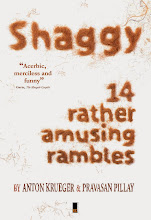Sunday, December 9, 2012
Spaza: 0011
Click on photo to enlarge.
The hawker's setup is essentially a deconstructed spaza. She has found a floor. The tree functions as a roof.
Two re-purposed bread delivery-trays hold her wares, which in turn rest on an easily dissembled trestle table. A standard cooler box sits at her feet. An upturned Coke crate functions as a makeshift seat for her customers. (The crates are often used as seats in informal businesses and spaces.*)
Bread trays. Coke crates. Cooler boxes. Three mass-produced objects that are ubiquitous in the so-called informal economic sector. They're popular for good reason - they're light, sturdy, cheap or free, portable, and easy to clean.
*The cheapness and availability of Monobloc chairs and high plastic stools has resulted in the crates not being used as much anymore.
Wikipedia on Monobloc:
"The Monobloc chair is a lightweight stackable polypropylene chair, often described as the world's most common.
Based on original designs by the Italian designer Vico Magistretti in 1967, variants of the one-piece plastic chair went into production with Allibert Group and Grossfillex Group in the 1970s. Since then, millions have been manufactured in countries including Russia, Taiwan, Australia, Mexico, the United States, Italy, France, Germany, Morocco, Turkey, Israel and China. Many design variants of the basic idea exist.
The Monobloc chair is named because it is injection moulded from thermoplastic polypropylene, the granules being heated to about 220 degrees Celsius, and the melt injected into a mold. The gate of the mould is usually located in the seat, so ensuring smooth flow to all parts of the tool. The chairs cost approximately $3 to produce, making them affordable across the world.
Social theorist Ethan Zuckerman describes them as having achieved a global ubiquity:
The Monobloc is one of the few objects I can think of that is free of any specific context. Seeing a white plastic chair in a photograph offers you no clues about where or when you are."







